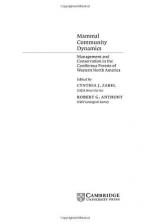|
This section contains 202 words (approx. 1 page at 300 words per page) |

|
The transfer of energy from organism to organism forms a series called a food chain. All the possible feeding relationships that exist in a biome make up its food web. In the forest, as elsewhere, the food web consists of producers, consumers, and decomposers. An analysis of the food web shows how energy is transferred within a biome.
Green plants are the primary producers in the forest. They produce organic materials from inorganic chemicals and outside sources of energy, primarily the Sun. Trees and other plants turn energy into plant matter, such as pinecones, needles, and seeds.
Animals are consumers. Primary consumers are plant-eating animals like squirrels, voles, mice, and beetles. Secondary consumers eat the plant-eaters. Tertiary consumers are the predators, like owls, wolves, and humans that eat other animals. Bears and humans are also omnivores, eating both plants and animals.
Decomposers eat the...
|
This section contains 202 words (approx. 1 page at 300 words per page) |

|




